In the context of changing technology, it is critical to choose the right network switch speed in order to enhance both the performance and capability of devices’ communications. This guide aims to cover as much as possible the definition of network switch speed, starting from the most basic features to more complicated aspects, for the assistance of both, IT experts as well as hobbyists. We shall examine the different types of switch speeds and the advantages associated with each as well as the speed applicable to different situations. Readers will be better placed on issues pertaining to basic technology understanding as well as the advantages of technology deployment in the business field in order to avoid operational confusion regarding the technology-based infrastructure.
Table of Contents
ToggleHow Does a Network Switch Work?
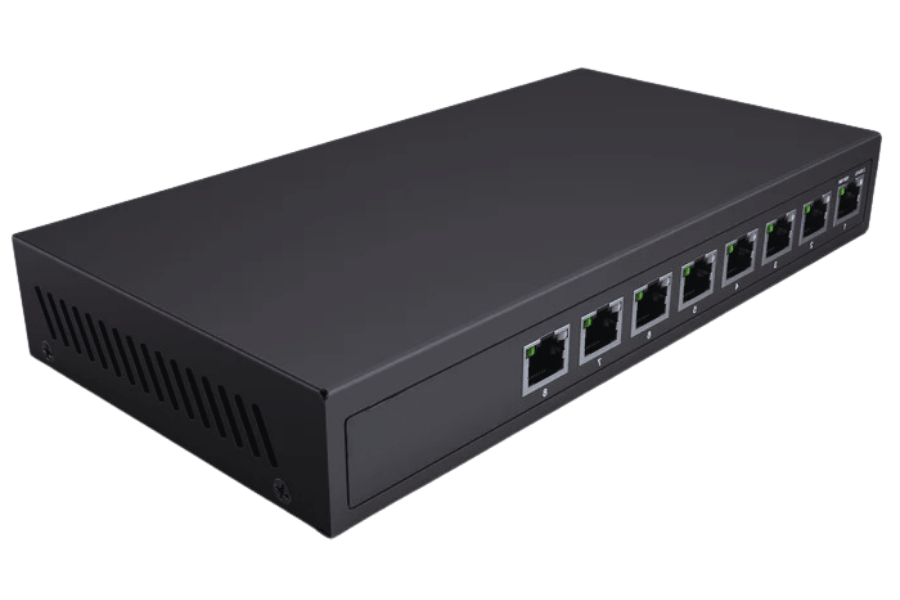
Network switches are multiport communication devices that join different devices; hence, networking at a Local Area Network is made possible. Data packets coming in are received and sent out to the specific devices needed, which aids in data transfer. Within the OSI model, it works on a data link layer Level 2 & routes using MAC addresses. In addition to this, there is level 3, where routing can be applied to switches to perform complex routing functions. This is useful in establishing connections with multiple devices and, in doing so, enhances the operation of the network while relieving some of the congestion.
What is a Network Switch?
Network switches are hardware in current-day network architectures, and hence, they are used to create or control traffic in a local area network (LAN) by dividing it into different segments. It mainly aims at interconnecting a number of different devices, such as computers exercise, printers, or servers, within a local area network (LAN), allowing them to work in a more unified way. Network switches are devices that work at Layer 2 of the OSI model and enable path switching over devices attached to the switch using MAC addresses to enhance throughput by creating virtual channels to each data intended to be sent over the network, thereby lowering the chances of data clashes.
Network switches, which can be of different varieties depending on port density and speed abilities, are classified in order to fill different network requirements. They mostly are of configurations such as 10/100 for small networks, 1 Gbps for normal corporate use, and up to 10/40/100 in data centers and large enterprise networks. Some of the advanced switches also provide PoE support, which includes supplying power to IP-based devices such as wireless access points and cameras, which reduces the additional cost of power.
In addition, the network switch can also be used for performing additional functions such as providing Virtual Local Area Network (VLAN) support, configuring traffic categories using quality of service (QoS) settings and employing link aggregation to enhance data rate. With such aspects incorporated in switches, they prove to be invaluable accessories in the stretching and improving the efficiency of IT infrastructure.
How Do Switches Operate in a Network?
The primary function of network switches is to handle packets in a local area network with the help of packet-switching technology. Each switch has the capability to accept data packets and, based on the incoming MAC addresses, direct the data to the appropriate port outside the switch. The operation involves the acquisition of MAC addresses for each device that is connected to the different switch ports in order to prepare an MAC address table and also assists the switch in computing the routing information. This is the reason why switches are able to ensure that even the smallest piece of data gets to the point where it is intended and not any other point, therefore eliminating unproductive communication overload and aspects of data collisions. Moreover, traffic also can be managed and scheduled with respect to priorities through the use of Quality of Service (QoS) where high priority communications are guaranteed. Their capacity to direct and control the traffic in the network contributes to the reason why switches are a key component in the network architecture.
Key Components of a Switch
Similarly to other devices, a network switch provides a lot of features, and there are a few crucial components that will help in enabling its operation and effectiveness in a network system. Below are the primary components that constitute a typical switch position alignment.
- Ports: These are the network interfaces leading to a switch that connects devices. Generally they are of different types and speeds i.e. fast ethernet, gigabit or 10-gigabit ethernet.
- Backplane: This is the internal channel for data signals of the switch that connects all ports, as well as allows data flow between them at very high rates. It is usually rated in terms of gigabits per second (Gbps).
- Switching Fabric: This is that hardware, software and logic structure in the switch that enables circulation of data packets between the obese and the outcoming ports.
- MAC Address Table: A table that is kept in storage that is used to relate certain MAC addresses to specific ports within the switch which data packets are required to come out through.
- Processor (CPU): The main processor which completes any task that runs the software of a switch includes control of service protocols for the network and running of data.
- Memory: It differs from RAM on the internal chip of the mace. Flash memory is also used to house system settings, the mac table together with enabling overhead protocols active.
- Power Supply Unit: This appliance supplies electrical energy to the switch and it may also contain additional units which serve to supply power in the event that the main ones fail.
- Operating System (Firmware): Refers to an embedded computer program within a switch that supervises its activities in particular routing techniques and network communication protocols.
These components work in unison to ensure that there is quality data transfer and efficient management of resources in the networks which helps in ensuring that the enterprise networks run smoothly.
What Are the Types of Network Switches?
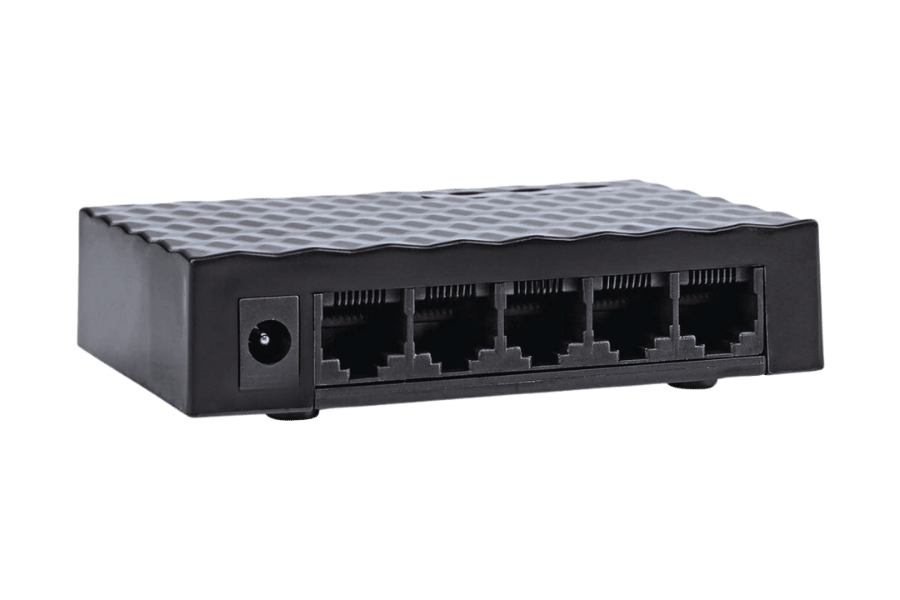
Unmanaged vs. Managed Switch
Unmanaged Switch: A rudimentary type of switch that does not need configuration to connect devices in the basic network, with no scope for finer traffic management or management from other locations.
Managed Switch: Offers great control options enabling the network admin to see and control the data traffic flow, security implementations, data prioritization, and diagnosis among other things – all of these are particularly appropriate for complex networks with immense trust and protection requirements.
Features of a Gigabit Ethernet Switch
Gigabit Ethernet switches offer a variety of new capabilities that improve the performance and control of the network. The features are as follows:
- High-Speed Connectivity: In addition to the 1g ethernet switch port data rate, which is up to 1 Gbps, these switches also convert data effectively, reducing the data congestion that occurs over the network.
- Quality of Service (QoS): Provides a means for traffic to be prioritized so as to ensure that the vital information is able to flow smoothly which in turn increases the performance of the critical applications.
- VLAN Support: Allows the division of the network which not only increases the security of the network but also makes the administration of the network resources more effective.
- Link Aggregation: This is the use of more than a single port for the purposes of expanding the bandwidth and building redundancy for the connection.
- Advanced Security Features: These are 802.1x, port security and access control lists for protection against unauthorized access to and data destruction on the networks.
- Remote Management: Wireless management of the switch is possible due to the fact that the switch supports SNMP and web-based configuration for monitoring and controlling the ethernet switch.
- Scalability: Can accommodate growth when network needs increase which makes it ideal for a changing business environment.
These features suggest that Gigabit Ethernet switches can work in contemporary networks that require reliability and speed and integrated management.
Understanding Types of Network Switches
Different forms of network switches can be evaluated based on a primary classification of their types based on their functions and usage. Managed Switches guarantee fine control and customization capabilities enabling the network administrators to tweak every port located on the switch, manage traffic flow, and enhance the performance of the network. This is appropriate in organizational environments that require a lot of network configuration and problem-solving. Unmanaged Switches, on the other hand, only link devices without any configuration being done, which makes it very ideal for homes or smaller offices that would prefer a plug-and-play option. Smart Switches are less complex than fully managed systems but provide features found in managed switching that help in focusing on mid-range networks that require monitoring and some level of control without too many configurations. Appreciating these differences makes it easier to choose the ideal switch type suitable for the given networking needs and constraints.
Why is Switch Speed Important?
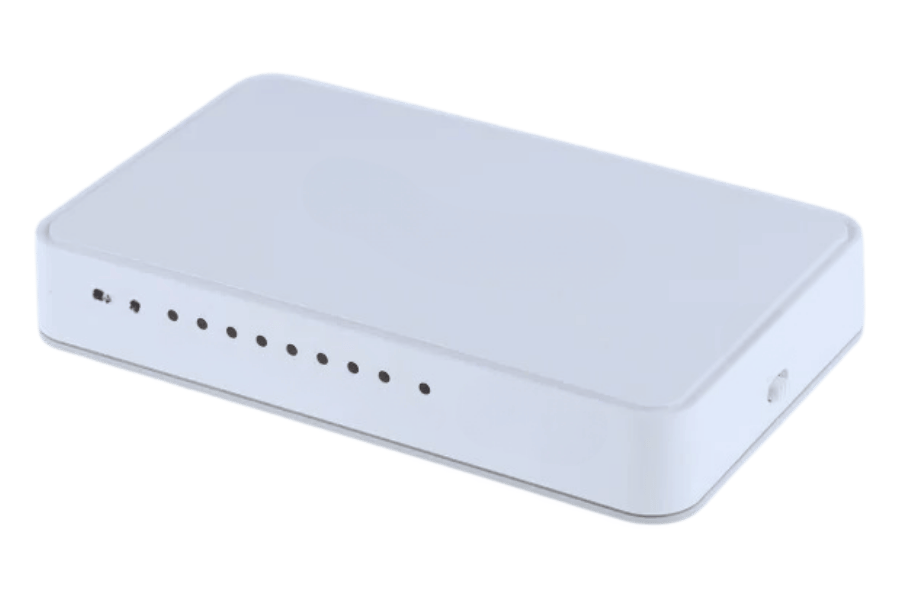
Impact on Network Speed and Performance
The switching speed is quite important as this determines the speed of data transfer within a network and, hence, the network bandwidth and efficiency. Use of high-speed switches cuts down the latency and increases data handling capabilities, thus providing fast communication between devices. In enterprise environments, this means that operations are made easy and data-heavy applications are made more efficient by reducing bottlenecks and improving throughput. Therefore, the appropriate speed selection of switches helps in satisfying modern digital infrastructure requirements.
Role of Gigabit Ethernet in Modern Networks
Gigabit Ethernet has been adopted as the primary network standard due to the reliable and fast transfer rates of its functionality at 1000 megabits per second, which is a great improvement on that of fast Ethernet, which is 100mbps. The chloroform-enhanced speed has become important to cater to the high usage needs brought forth by real-time applications such as videoconferencing and the use of cloud services and big data analytics. The introduction of Gigabit Ethernet works wonders in increasing the amount of data that can be transferred at the same time, thus solving issues of network congestion, which has become rampant, especially in and around data centers and enterprises with high user demand.
Besides speed, Gigabit Ethernet allows for other beneficial features, including Quality of Service (QoS) and Network security operations, which are necessary to ensure that service provision and data are kept secure. It has been shown that systems that have used Gigabit Ethernet have been able to speed up processes by up to 30-40 compared to systems that have Fast Ethernet due to a reduction in latencies.
In addition, the downside of the Hyperlink of Aggressive Internet Migration Approaches has been corrected and is now curable by upgrading the network components’ strategic investments. AoIoT continues to pose requirements that IoT reigns, and with broadened data domains, Gigabit Ethernet serves the unique and sophisticated need to meet strategy enhancement.
Improving Internet Connection with Faster Switches
There is a better solution for improving internet connectivity, which is to upgrade the obsolete network switches and replace them with more upgraded ones, such as Gigabit or Multi-Gigabit Ethernet switches. This comes with enhanced connectivity in terms of higher bandwidth, lower latency, and the ability to support more users at a time. Enhancing the speed through the use of new switches reduces the network downtimes that arise as a result of slow hardware. One additional factor that these modern switches usually have is the VoIP feature, which has added to the normal function and thus bettering the situation of stable operations. There is, therefore, a need to change the switches since there are ever-increasing needs for higher bandwidth due to the applications that handle huge amounts of data together with more use of cloud and internet-connected devices. Hence, all end users will enjoy an enhanced, more reliable, and forward-looking network that is capable of absorbing expansion as new technologies and applications emerge.
What Do Network Switch Ports Offer?
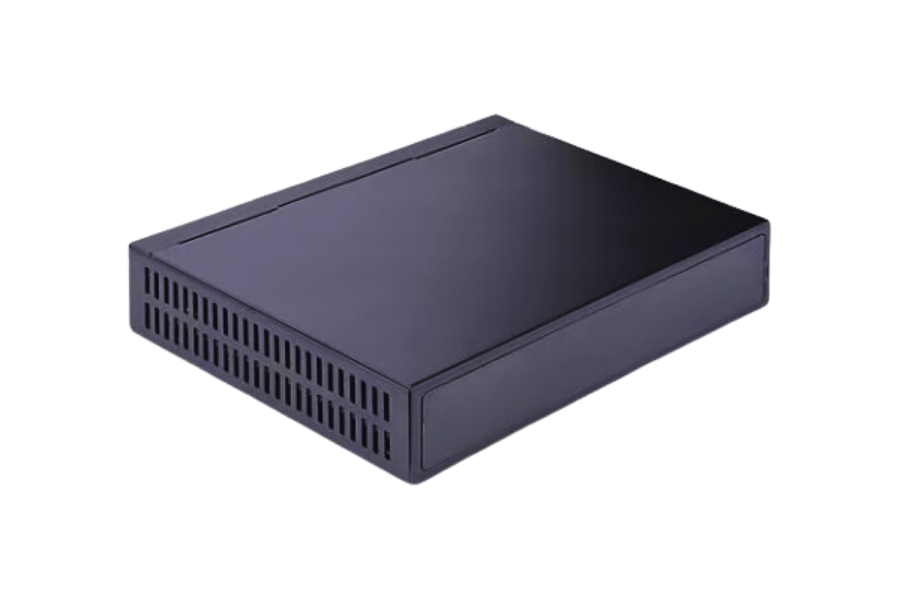
Understanding Ethernet Port Configurations
The parameters and uses of ethernet ports differ based on the different speeds, such as Fast Ethernet (100 Mbps), Gigabit Ethernet (1 Gbps), and Multi-Gigabit, which includes 2.5, 5, and 10 Gbps. Most ports are equipped with an auto-sensing feature, which allows the port to identify the connected devices and match them with the strongest performance supported by both systems. They also support full duplex communication, which means sending and receiving information, which improves the communication of the network. Such aerial systems also can include such combinations as Power over Ethernet (PoE), the ability to provide power to the devices connected to the system, and VLAN, which is useful when there is a need to divide the system into subsections for effective control and security of data transmission.
Benefits of Power Over Ethernet (PoE)
Power Over Ethernet (PoE) technology provides some primary benefits that help to improve the flexibility and the efficiency of the network deployment in an admirable way as follows:
- Reduction of Complexity in Installation: Since PoE combines both data connectivity and electrical power within an Ethernet cable, it does away with the need for separate power sockets next to each and every electrical component. This reduces installation effort and the number of cables involved, and hence contributes to monetary advantages on the work and materials.
- Easy Location of Devices: There is an advantage brought by PoE that one does not always have to be near the power outlet. In this case, devices such as IP cameras, wireless access points, and VoIP phones can be positioned in areas that will optimize their use and effectiveness. This flexibility permits installations in positions where it is most appropriate, irrespective of the existence of power sockets.
- Reduced Potential Threat of Growing Operational Environment: PoE lessens the burden of adding new devices in building up network installations, as these devices can be connected without making significant alterations in the current infrastructure. The redisposition of equipment quickly also has a positive effect concerning the changing requirements of the institution.
- Ability to Control Power Dispersion with Ease: PoE allows for power management of network devices to be done physically, in other words, from the network devices down. It has some advantages like enhancement of power management hence resetting of devices during their down time or remotely is made possible and simple.
- In this case, the part “An uninterrupted power supply” relates to Power over Ethernet. When Vale connects to an uninterruptible power supply, PoE is capable of providing power to the devices even when there is no electricity; thus, critical services can still be performed. This is essential for high-availability systems like surveillance cameras or communication equipment.
- Improved network performance: Thanks to the decreased amount of power cords and sockets needed, PoE leads to more attractive networking spaces which are less cluttered with wires. Such modest improvements of efficiency can streamline network performance and maintenance as well.
These advantages explain why Pasive PoE is highly adopted in today’s architecture or systems to be encouraged because design is improved, cost cut down and efficiency is high.
Importance of Number of Ports in a Switch
When creating and expanding the architecture of a network, in particular, the number of ports available in a network switch is integral. Those consisting of many ports will connect to more devices, including terminals such as computers as well as printers and servers, to the network directly. This is important, especially for those companies or networks that foresee continuous growth, as it provides ease of expansion as well as cost effective. Additionally, additional ports provide redundancy as well as load sharing to the networks thus enhancing the performance of the network. It is critical that the switch has an optimum number of ports so that the present needs of the network are met, and its further development in terms of growth as well as technological development will be easy.
How to Choose the Best Network Switch?
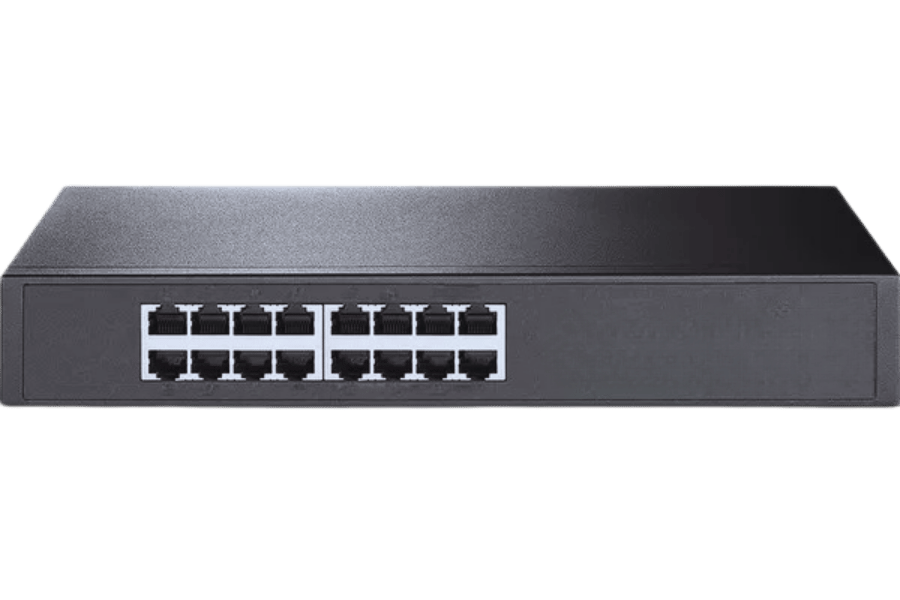
Assessing Network Requirements and Needs
- Device Connectivity Assessment: Estimate how many devices will require operational network access in order to arrive at the minimum number of port requirement for the switches.
- Network Traffic Consideration: Study the present and volume of prospective data usage in order to position a switch that can accommodate future needs.
- Determine Power Requirements: Examine if Power over Ethernet (PoE) is necessary for some devices like IP cameras or VoIP phones, making a difference in switch selection.
- Immediate Conditions of Growth: Predict further development of the network in the future in order to be able to use the switch for a longer time than just the present situation.
- Specify Redundancy Sought: Consider if network redundancy required so that there is high availability, and then select the switches accordingly.
- Budget: Take into account budgetary constraints especially considering that the switch should be able to provide minimum requirements in terms of performance in the network.
Comparison of Managed Network Switches vs. Unmanaged
When it comes to network switches, there are managed and unmanaged switches on offer. Here, managed network switches provide more control and customizability than unmanaged ones. They tend to have network pivots, such as Virtual Local Area Networks, quality-level settings, and other such management, which is necessary for complex network topologies. Managed switches enhance the deployment and administration of the networks by allowing their users to configure them across the internet. Unmanaged switches, on the contrary, are relatively lowly advanced devices and offer plug-and-play connectivity without device settings for networks that are less complicated. Although there are higher chances of incurring extra costs with managed switches as a result of their advanced features, there is always more room for growth and control, especially for developing organizations, whereas unmanned switches provide a cost-effective solution for networks that are static and do not require a high level of management.
Which Switches Are Used in Specific Setups?
In an enterprise network, managed switches are usually with different strategies as companies would choose advanced equipment with such modern characteristics as VLAN, QoS, and security. As such, it is appropriate where extensive management and enlarging of the network is inevitable. These switches are typically deployed in data centers, corporate networks, and any other environment where reliability and performance are critical. Implementing unmanaged switches, on the other hand, are frequent in less or home networks where the primary concern is ease of use and low price. They are particularly useful for simple connection points without any complicated adjustments. Therefore, such devices are generally used in small offices or at home for basic functions since there are no complicated controls. In addition to the above, for systems where there is a need for management and also cost effectiveness, smart switches, which are adopted in most cases to be a variant intermediate between managed and common (generic), can be used.
Reference Sources
Frequently Asked Questions (FAQs)
Q: What network switch features are the most important?
A: In this assessment, the number of switch ports, whether it is a gigabit switch, PoE functionality, stackable, or advanced features for network optimization, will be supported.
Q: What advantage does a gigabit switch bring to a home network?
A: A gigabit switch allows using a home network to its full capacity since data transfer rates can reach up to one gigabyte per second, facilitating seamless file sharing, gaming, and streaming using various connected devices.
Q: How do unmanaged switches and managed switches differ?
A: An unmanaged switch is just a simple device that offers a plug-and- play interface with no set up required hence is suitable for basic systems. A managed switch on the other hand gives the network administrator room to control and manage functions such as VLANs and QoS among others for better efficiency.
Q: Are switches capable of enhancing the performance of an office network?
A: Yes, if the correct type of switch is used for example gigabit switch or PoE switch, data flow will improve, bottleneck will reduce, and sufficient bandwidth will be available for all interconnected devices.
Q: What are the benefits of different types of network switches?
A: There are different types of network switches that serve different purposes. For instance, unmanaged switches have simple configurations to facilitate basic connectivity, managed switches offer the user greater guests’ administration options. Stackable switches provide a way for growth, PoE switches are able to conduct electricity along with network data to electronic devices.
Q: How do fast ethernet switches compare to gigabit switches?
A: Fast Ethernet switches operate at maximum speeds of 100 Mbps which is a sufficient speed for basic connectivity purposes. However, gigabit switches can support approximated 1 Gbps and hence helps in faster data transfer that is efficient for applications that require high network specifications.
Q: How does a switch attach to the network category? What is his role?
A: Being a communication device, a switch is connected to the local area network with the help of Ethernet cables. One way or the other, the switches facilitate exchange of information in a local area network (LAN) because they group several devices and receive packets from several devices before passing them to target devices or intended places.
Q: What about the gigabit ports on any network equipment? Do they have any significance?
A: Media equipment that are networked have imbedded Gigabit ports and this is vital since modern applications cause excessive data traffic and these bandwidths need to be transferred without any interruptions hence promoting working environment for a wired network .
Q: Which aspects should any power sourcing equipment operate from, either external or internal while building a local area network?
A: The outdoor or indoor worked on expects any power sourcing equipment used materials, either PoE or switches considering the total number of connections around the world or imagine just the European continent that has over 30% VoIP phones in the business sphere.
